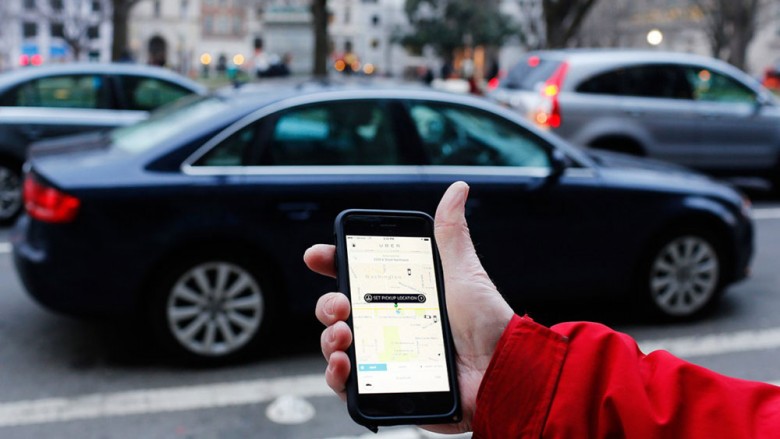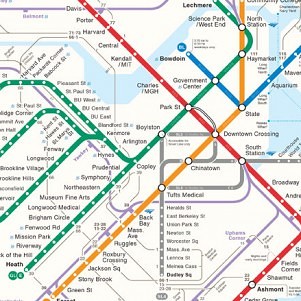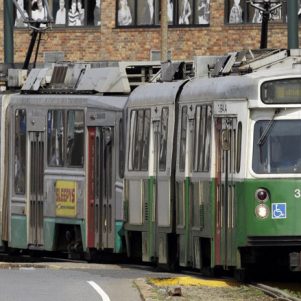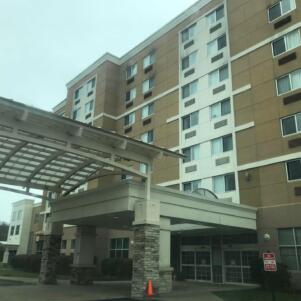Partnership between The Ride and Uber coming for paratransit passengers
By State House News Service | November 10, 2015, 6:42 EST
 (Courtesy of Flickr)
(Courtesy of Flickr) BOSTON — As the MBTA looks to cut costs and improve service, a state transportation official on Monday said the T could save as much as $47 million a year on The Ride program by raising fares, reducing service and forging partnerships with the taxi industry and companies like Uber and Lyft.
Michael Lambert, MassDOT’s deputy administrator for transit, told the MBTA Fiscal and Management Control Board that The Ride — which provides 2.1 million trips each year for people with disabilities and cost $97 million to operate last year — must make changes or its cost will jump to $108 million in fiscal year 2017.
Lambert presented the board with a handful of possible changes, including raising fares to the maximum allowed by the Americans with Disabilities Act, limiting The Ride service to only the area it must cover under the ADA and reducing some of The Ride’s overhead costs by partnering with taxis or other transportation companies.
This week, the T is beginning a pilot program that allows customers who use The Ride to hail a subsidized ride with a handicapped accessible taxi.
Eligible riders who opt into the pilot program receive a Bank of America debit card that can only be used to pay for taxi rides. For every $2 the customer loads onto the card, the T matches with an additional $13 to equal the current ride subsidy, Lambert said.
“It is designed to support both those who commute everyday via short trips or those who live in outlying areas doing short trips,” Lambert said. “Either way, it allows for the customer to make on-demand requests, travel by themselves, save a dollar or three and also has a reduced cost to the T.”
The subsidized taxi program, Lambert said, could save the T as much as $16 million a year, if implemented across the system.
The next step is to forge partnerships with ridesharing services like Uber and Lyft, Lambert said, to allow The Ride customers to schedule an accessible vehicle to transport them on demand, while still paying no more than the cost of using The Ride.
“Uber probably represents an ideal fit because it is account-based, which is how The Ride currently works, and it allows for the direct contact between the driver and the customer,” he said, adding that there will “definitely” be some sort of partnership between The Ride and Uber in the future. “The main obstacle there is making sure there are enough accessible vehicles.”
The T plans to “aggressively expand” taxi and ridesharing partnerships and its current travel training program. That program helps teach The Ride customers how they can use the fixed-route bus and train system instead of The Ride, Lambert said.
Lambert also told the board that they could chose to raise fares for The Ride, which could result in a savings of $8 million.
Currently, The Ride customers are charged a $3 fare if they book the trip at least a day in advance and are traveling from one location within three-quarters of a mile of a train or bus stop to another location near a train or bus stop. Others are charged a $5 fare, Lambert said.
But the T could increase the base fare to $4.20, the maximum ADA-allowed fare, he said. Any fare hikes would be part of a broader package of MBTA fare increases under consideration, he added.
Lambert also said the T could save $12 million a year by scaling back the area served by The Ride to only what is required by law. The ADA requires that The Ride serve all areas within three-quarters of a mile of an MBTA station, but The Ride currently serves a wider area.
The board took no formal action Monday, and Lambert said his presentation was intended to get the board thinking about the possibilities for The Ride as it begins to mull its budget request for next year.
While there is an appetite for cost cutting at the T, Lambert said that some of the proposed partnerships and programs would have the dual benefit of improving service for customers without costing the T more to operate.
“While it is expensive, the options such as taxi and travel training also are designed to increase the independence of customers,” Lambert said. “The ability to change ones plans, to do something impromptu and not have to rely on a service that needs to be booked a day in advance, we see as a huge improvement for our customers and it’s something our customers demand.”
— Written by Colin A. Young
Copyright State House News Service











